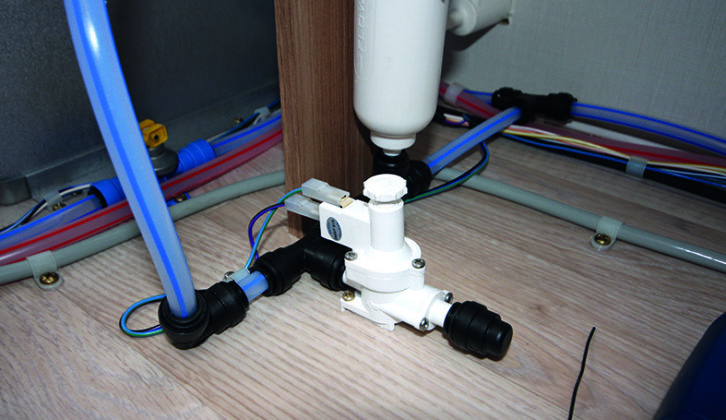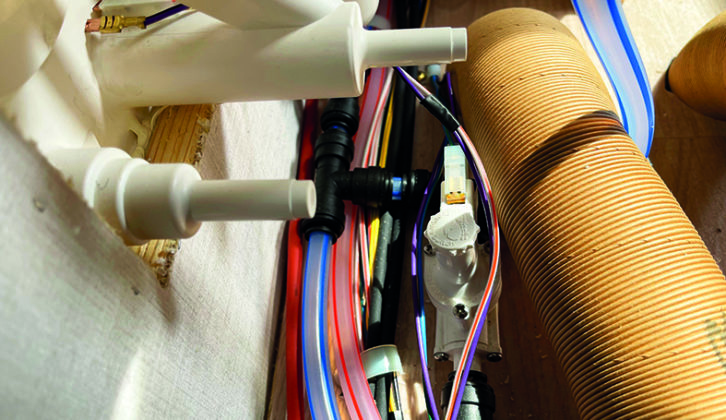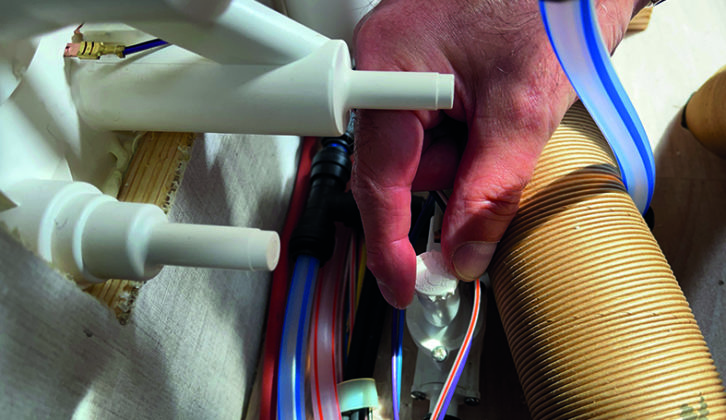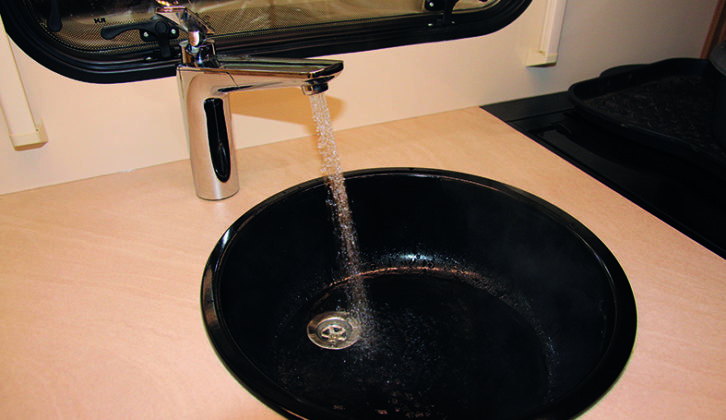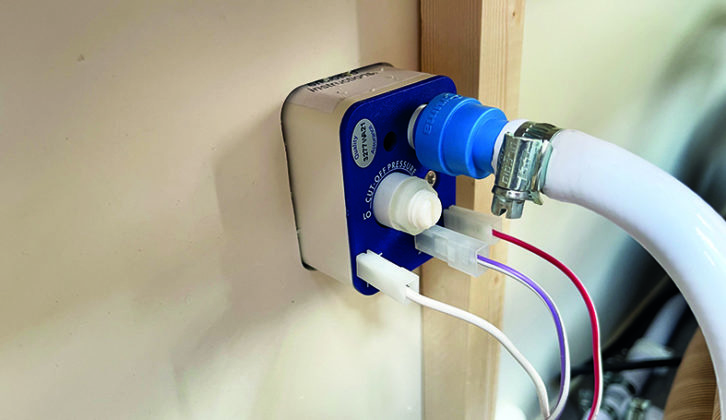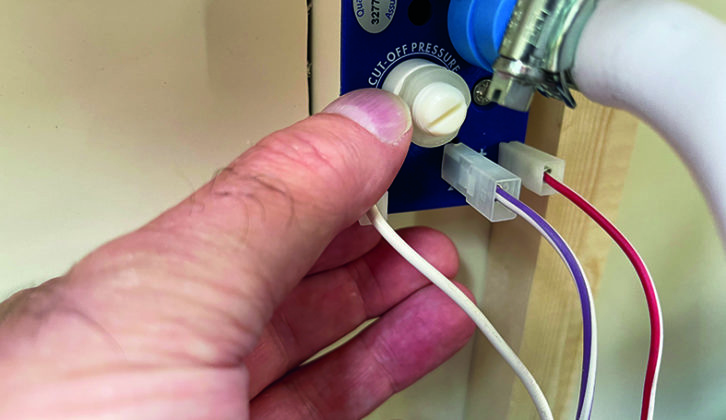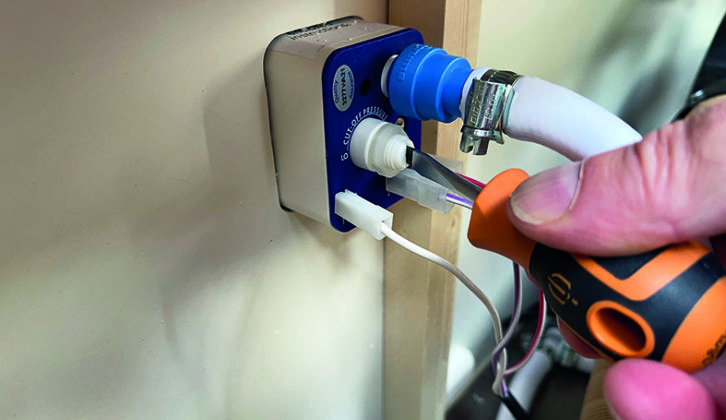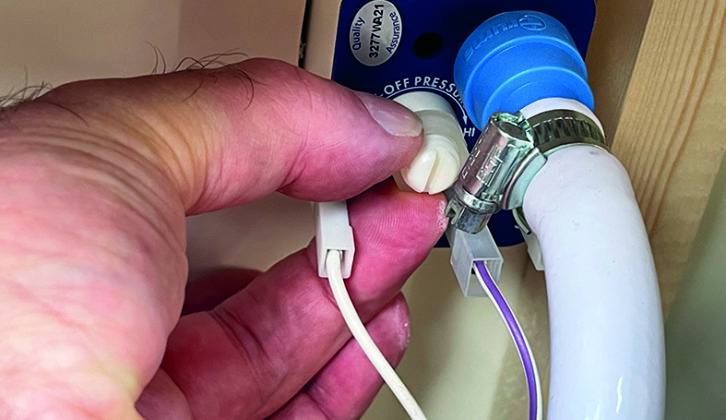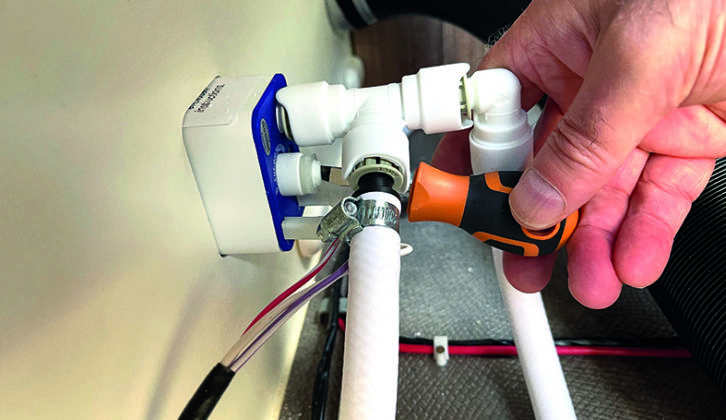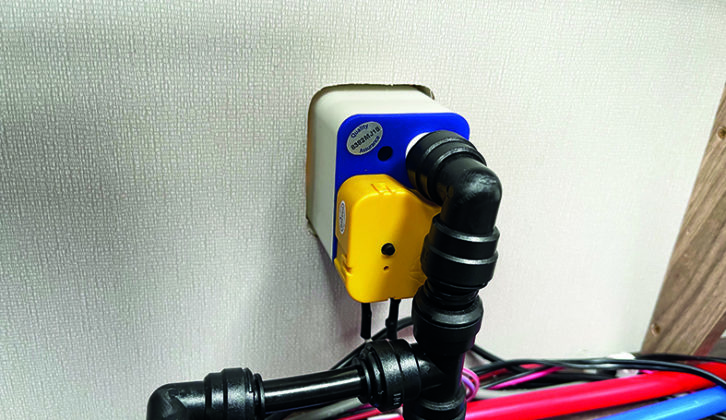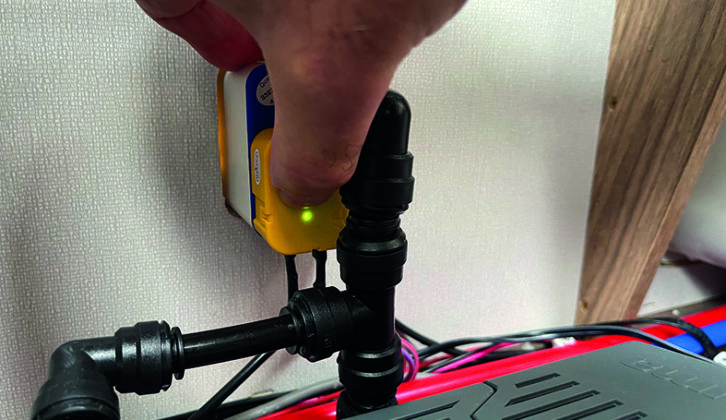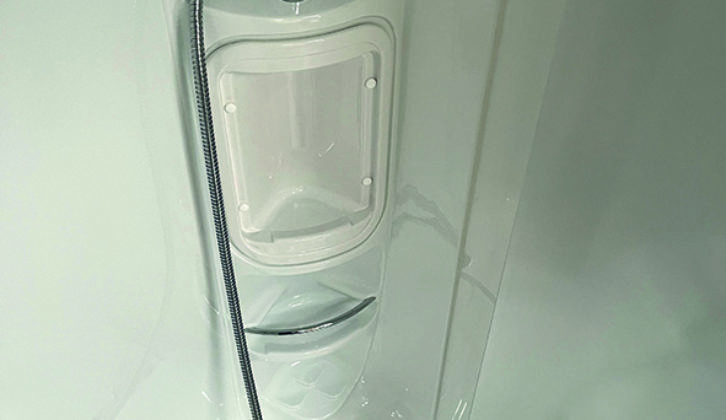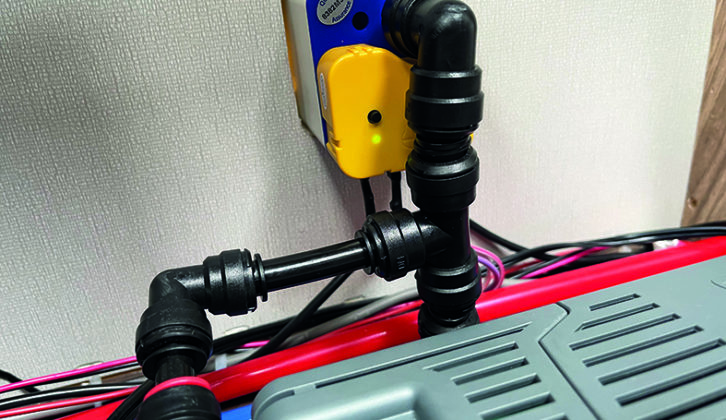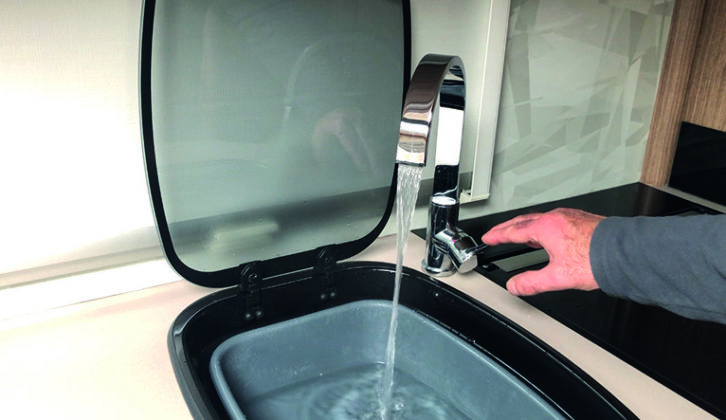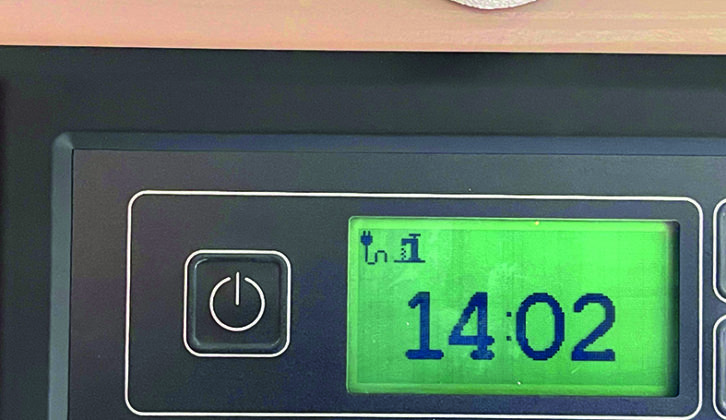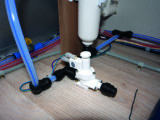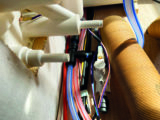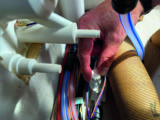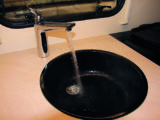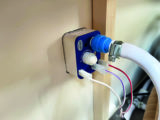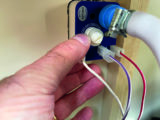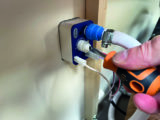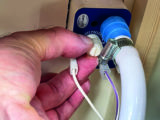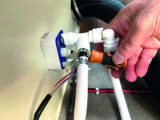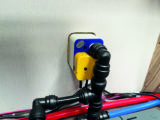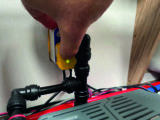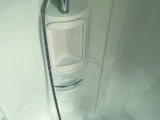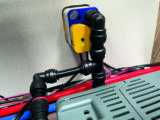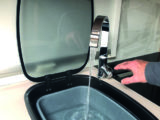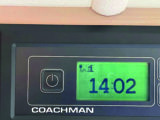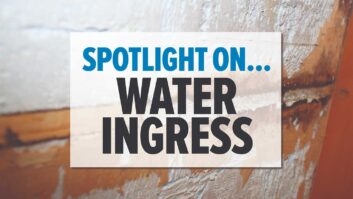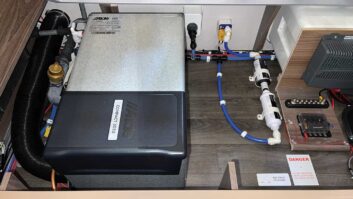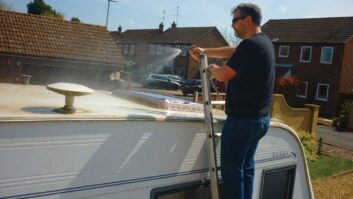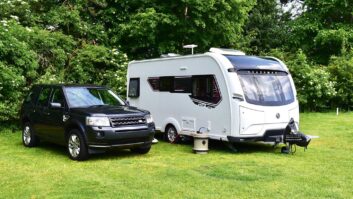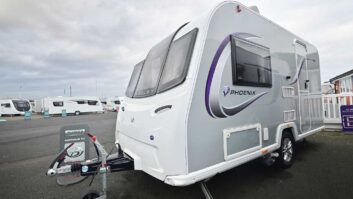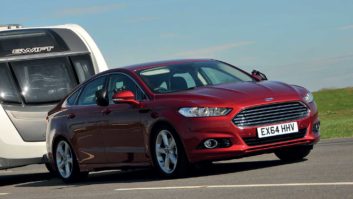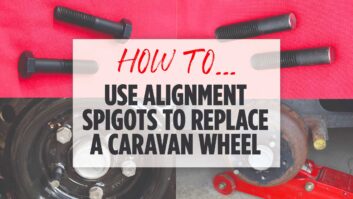There are basically two types of fresh-water system fitted in caravans. One uses microswitches in the taps to turn on the water pump, while the other uses a pressure switch and detects a drop in pressure to turn on the pump. Both systems have pros and cons. This guide offers advice on how to fix water pressure switches.
Cons-wise, microswitches can fail – often at what seems like the most inopportune moment! So it’s worth carrying a couple of spares. Pressure switches are susceptible to even slight voltage variations.
Pressure switches
Three questions are commonly asked about water supply for caravans, and generally, they point towards pressure switch adjustment or calibration of a Whale Watermaster IC (Intelligent Control) unit.
The questions go along the lines of :”Even though my taps are closed, the pump in the Aquaroll continues running”; “My pump pulsates on and off when I open a tap”; and “I can’t get constant warm water for a shower because the water keeps going from cold to hot every few seconds”.
As already mentioned above, pressure switches are prone to voltage variations. So, if you’re on mains hook-up on one trip and everything is fine (your 12V battery is kept fully topped up by the caravan’s charger), then on your next trip, which is off-grid (without hook-up), the water supply might be fine at first, but as the voltage from the battery drops, it’s likely the pressure switch will need adjusting at some point.
A drop in voltage means symptoms from continuous running of the pump are likely.
Conversely, if you go off-grid the first time and then you have hook-up the next, a pulsating pump its likely, as the voltage is probably higher than when you were relying on 12V battery power alone (when the charger and/or solar panel are working on our caravan, a charge of 13.7V is often displayed).
If the symptoms are of the shower water fluctuating in temperature, this too is a sign that you have a higher voltage than on your previous trip.
Now let’s take a look at how to adjust the various types of the most popular pressure switches found in caravans.
Whale in-line pressure switch
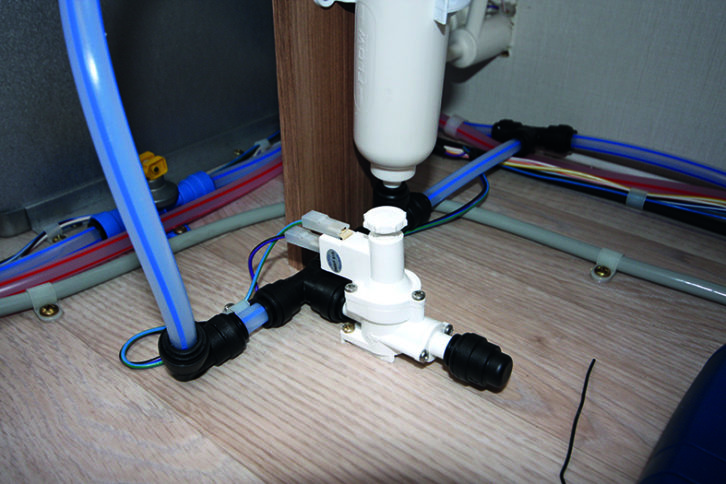
A Whale in-line pressure switch will often be fitted if you have a Truma inlet in your van.
This is a white-coloured unit that will be found near to the caravan’s water inlet.
These switches can be rather buried among the pipework, but they will be attached to the cold water pipes and have a couple of wires going to them, and a clearly visible thumbwheel.
- The first step is to make sure that the caravan’s water system (including the water heater) is full, and then close all of the taps. Now check that the master switch for the pump is on.
- Turn the thumbwheel clockwise until the pump switches on.
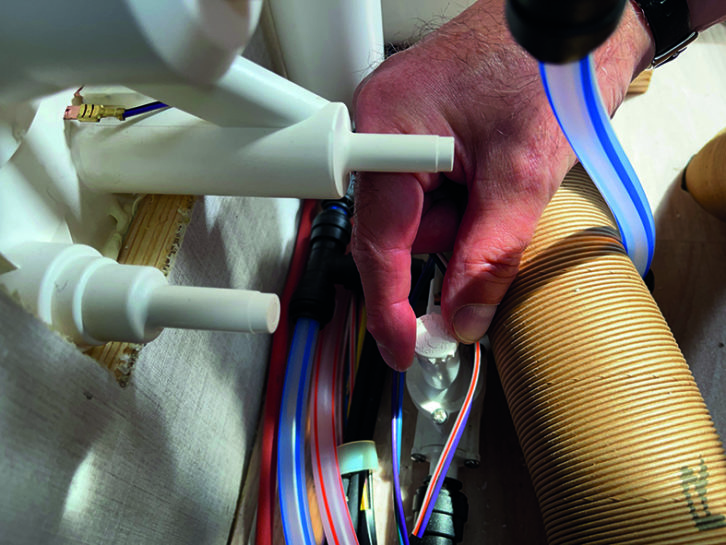
Turn the thumbwheel clockwise until the pump switches on - Now open any tap slowly, to the point where you have a smooth flow of water, and then close it again. The pump should continue to run.
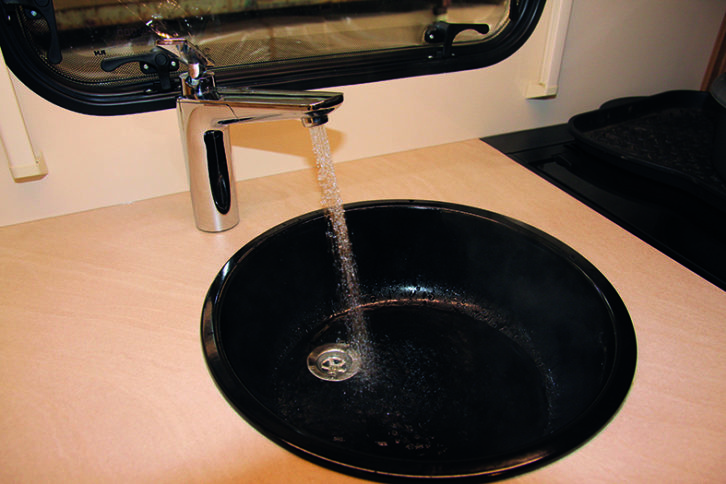
Open cold taps individually to check pump operates correctly - Next, slowly turn the thumbwheel on the pressure switch anticlockwise, until the pump stops running.
- To check that the pressure switch is correctly adjusted, fully open each of the cold taps individually. The pump should turn on when you open the taps and then turn off again immediately when you close them.
- If you operate the hot taps, bear in mind that it’s normal for there to be a delay in the pump both switching on and switching off again (this can be up to 10 seconds).
- Experience has taught me that you might have to make more than one attempt to get the correct adjustment!
Whale integral pressure switch
The Whale integral pressure switch is a fairly new unit, and it’s located on the back of the water inlet socket. Again, access to some of these can sometimes be a little bit tricky.
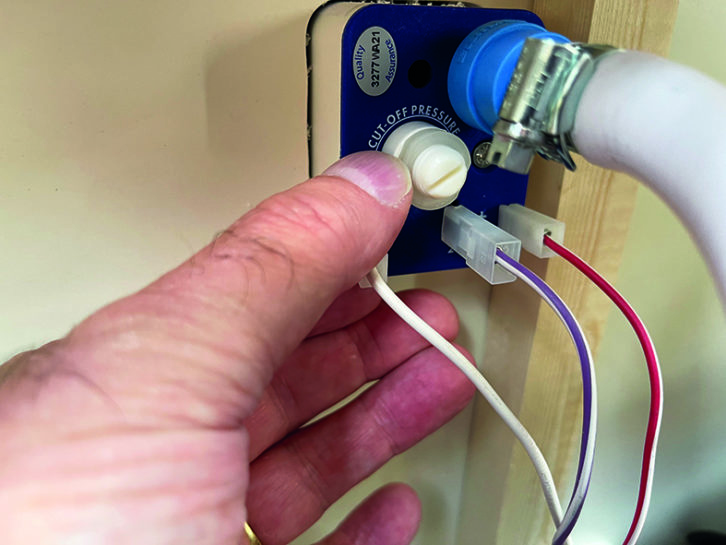
- As with the in-line pressure switch, the first step is to ensure that the caravan’s water system is completely full and the pump master switch is in the ‘on’ position.
- Rather than being adjusted by a thumbwheel, adjustment to these switches is made by using a screwdriver placed in the slot found on the end of the adjustment screw.
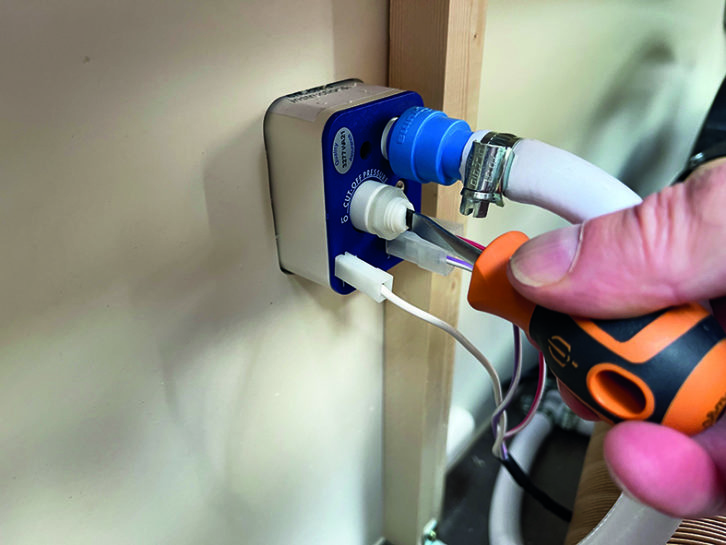
Use the screw to adjust switch, then tighten the locknut again - But before any adjustment can be made, the locknut will need loosening. These are generally only finger-tight. Loosen the locknut by turning it anticlockwise.
- Now, using a flat-blade screwdriver, turn the screw clockwise until the pump begins to operate.
- Open one of the cold-water taps to the point where you have a smooth flow of water, and then close it again. The pump should still continue to operate.
- Turn the adjustment screw anticlockwise to the point where the pump stops, and then turn it through a further 180 degrees.
- Turn on each cold tap individually and ensure that the pump turns on when you open the tap and off again when you close it.
- When you’re happy with the adjustment, ensuring that the adjustment screw doesn’t turn at all (keeping it in place with the screwdriver), tighten the locknut. Again, this only needs to be finger-tight.
- As with the in-line pressure switch, it’s normal for there to be a slight delay in the pump switching on or off when you’re using the van’s hot-water system.
Whale Watermaster IC
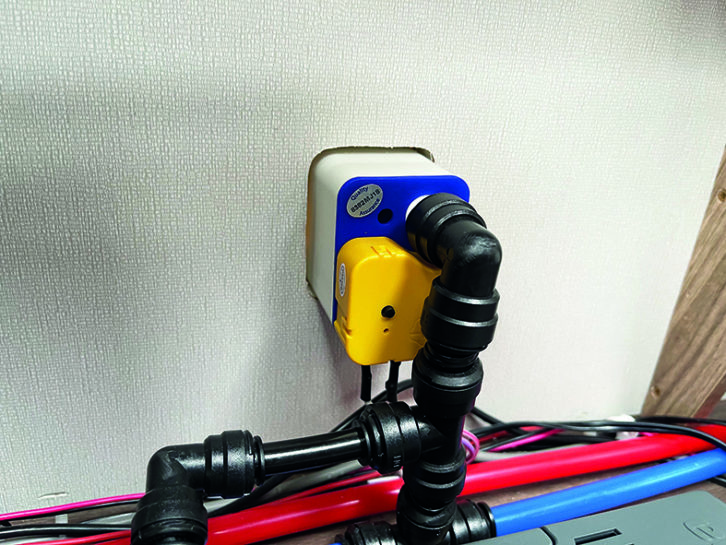
Like the integral pressure switch, the Watermaster IC is mounted directly behind the water inlet socket. There’s no adjustment screw, just a small yellow box with three wires going to it.
- With the water system full and the pump master switch on, press and hold the small black calibration button on the back of the yellow IC unit until the green LED below the button starts flashing.
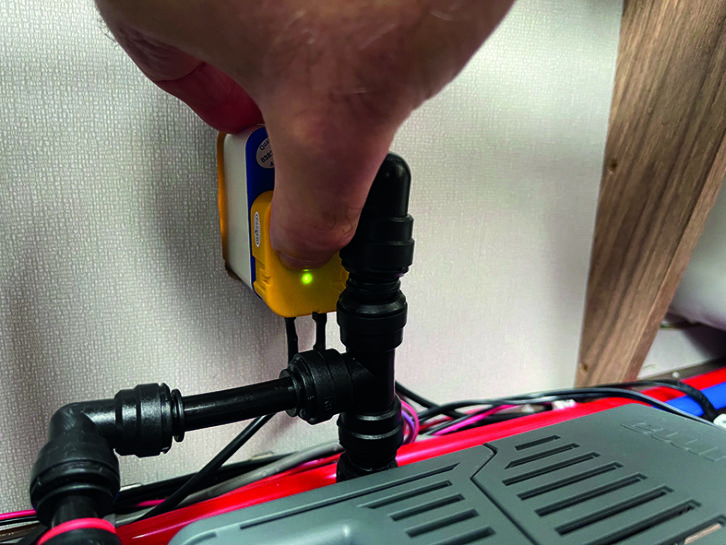
Press and hold the calibration button until green LED flashes - Turn on the cold shower tap for about 30 seconds and then turn it off again.
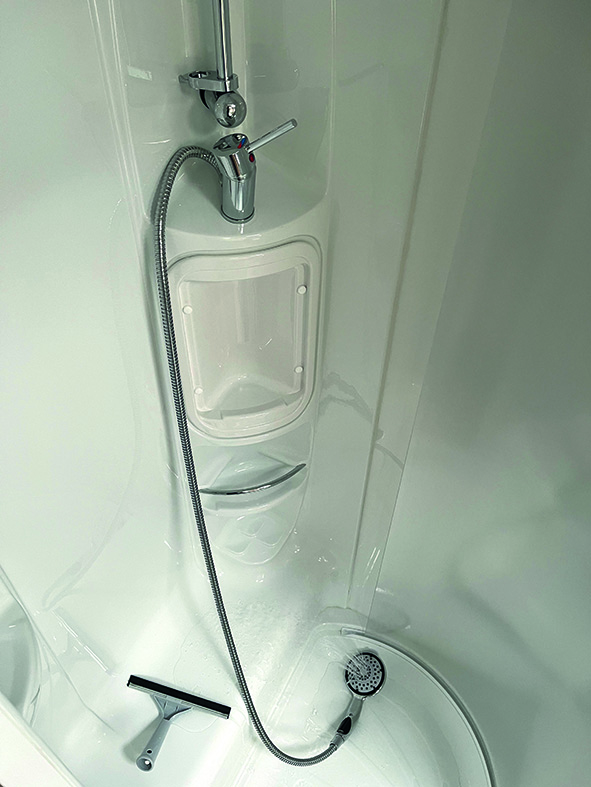
Turn on the shower’s cold tap and run for about 30 seconds - After about another 10 seconds, press and hold the calibration button on the IC unit until the LED turns solid green. The pump should stop running after a further 10 seconds or so.
- As with the other units, on occasion, I have had to repeat the process to get it right; but generally, once it’s been done, that’s it.
If you liked this… READ THESE:
DIY Mechanic: Fridges and Toilet Flushes
Top Gadgets for Staying Safe on Tour
Best caravan manufacturers – the 10 best caravan brands
If you go off-grid, then have hook-up next time, a pulsating pump is likely: the voltage is probably higher than when you were relying on 12V battery power

